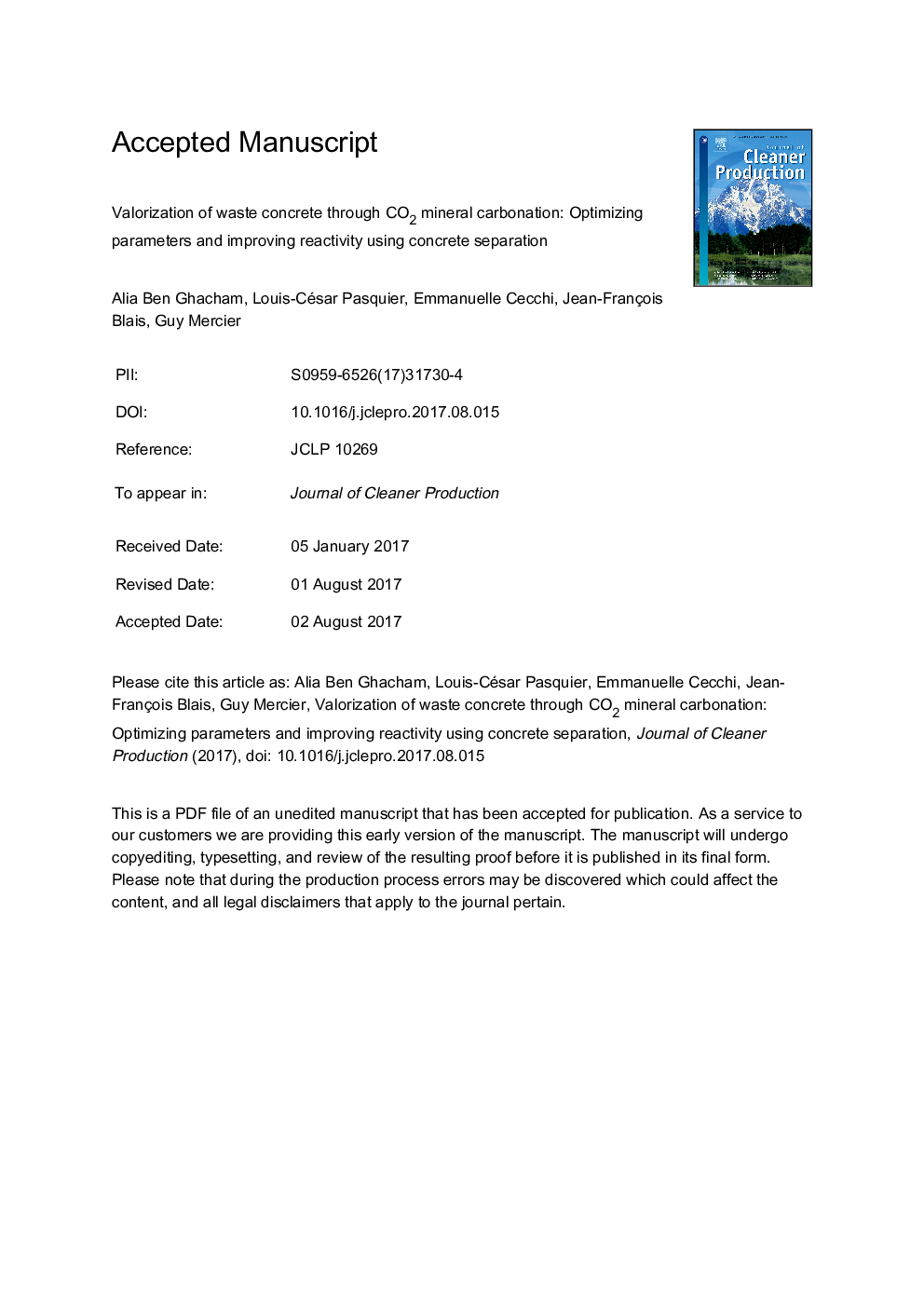| Article ID | Journal | Published Year | Pages | File Type |
|---|---|---|---|---|
| 5479957 | Journal of Cleaner Production | 2017 | 32 Pages |
Abstract
The use of CO2 mineral carbonation represents an attractive approach to recycling waste concrete. In this study, the effect of gas pressure, Liquid/Solid (L/S) ratio (w/w), Gas/Liquid (G/L) ratio (v/v) and reaction time for CO2 sequestration were investigated. While carbonation of such matrix is already described, this study opens new insights in concrete carbonation. To increase the reactivity potential of concrete, the fine fraction (<500 μm), which contains mostly cement paste, was separated from the inert coarse aggregates. Separation was conducted by crushing and sieving. The ground fine concrete fraction showed enhanced reactivity with 75% of CO2 removed (corresponding to 0.057 g CO2 removed/sample) compared to that of raw concrete, with 54% of CO2 removed (corresponding to 0.034 g CO2 removed/sample). Tests were conducted under 144 psi of gas pressure (9.93 Bars) at ambient temperature for 10 min. On the other hand, the resulting aggregates fraction have an improved potential recycling value. The new proposed approach allows better carbonation efficiency and increases the overall valuation of waste concrete.
Keywords
Related Topics
Physical Sciences and Engineering
Energy
Renewable Energy, Sustainability and the Environment
Authors
Alia Ben Ghacham, Louis-César Pasquier, Emmanuelle Cecchi, Jean-François Blais, Guy Mercier,
